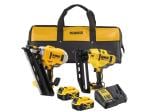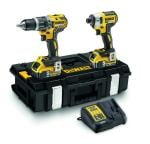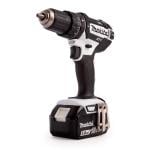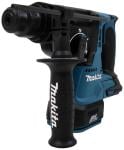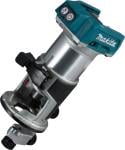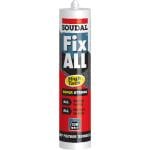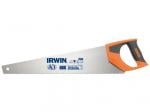The History of Makita: A Legacy of Power and Innovation
Introduction
Makita, a name synonymous with power and precision in the world of tools, has a rich history that spans over a century. This Japanese powerhouse has continually redefined the tool industry with its innovative and reliable products. Join us on a journey through time as we explore the captivating history of Makita.
Early Origins and Founding
Makita's story begins in 1915 when Mosaburo Makita founded the company in Nagoya, Japan. Initially, Makita was a modest electric repair and motor sales business. However, Mosaburo had a vision of building not just tools but a legacy of quality and innovation.
The First Electric Planer
In 1958, Makita introduced its first-ever power tool, an electric planer. This marked the beginning of Makita's dedication to developing high-performance tools that simplified tasks for professionals and DIY enthusiasts alike.
International Expansion
With a commitment to quality and innovation, Makita expanded its reach beyond Japan's borders. In 1970, the company established Makita Corporation of America, Inc. in the United States, paving the way for its global presence.
The Cordless Revolution
The 1970s witnessed a revolution in the tool industry with the launch of the first cordless power tool by Makita. This groundbreaking innovation gave professionals the freedom to work untethered from power sources, transforming job sites and DIY projects.
Focus on Ergonomics and Efficiency
Makita has always prioritized the comfort and efficiency of tool users. The company invested in ergonomic designs and lightweight materials to reduce user fatigue, making tools like drills, saws, and grinders more user-friendly.
Pioneering Lithium-Ion Technology
In the early 2000s, Makita became a pioneer in lithium-ion battery technology for power tools. These batteries not only extended runtimes but also provided faster charging, improving productivity on job sites.
Commitment to Sustainability
In recent years, Makita has emphasized sustainability and eco-friendliness in its operations. The company's focus on reducing carbon emissions, recycling, and responsible manufacturing demonstrates its commitment to a greener future.
Digital Integration and Smart Tools
Makita, like its competitors, recognized the potential of the digital age. They have embraced technology by introducing smart tools with Bluetooth connectivity and mobile apps that provide real-time data, usage tracking, and maintenance alerts.
Industry Leader
Today, Makita stands as an industry leader with a comprehensive range of tools, including drills, impact drivers, saws, and much more. Their products are renowned for their durability, performance, and ergonomic designs.
Global Recognition
Makita's commitment to quality has garnered recognition and trust worldwide. Professionals and DIY enthusiasts in construction, woodworking, automotive repair, and many other fields consider Makita as their go-to brand for reliable and efficient tools.
Conclusion
Makita's history is a testament to its unwavering commitment to innovation, quality, and user satisfaction. From its humble beginnings as an electric repair shop to its current status as a global tool giant, Makita has consistently set the bar high for the tool industry. Its legacy of power, precision, and innovation continues to shape the future of tools and the way we build, create, and maintain in a dynamic world.
Frequently Asked Questions
- Who founded Makita? Makita was founded by Mosaburo Makita in 1915.
- What was Makita's first power tool? Makita introduced its first power tool, an electric planer, in 1958.
- When did Makita expand internationally? Makita established Makita Corporation of America, Inc. in the United States in 1970, marking its international expansion.
- What is Makita known for in the 1970s? In the 1970s, Makita revolutionized the tool industry by introducing the first cordless power tool.
- How does Makita contribute to sustainability? Makita focuses on sustainability through measures like reducing carbon emissions, recycling, and responsible manufacturing practices.


